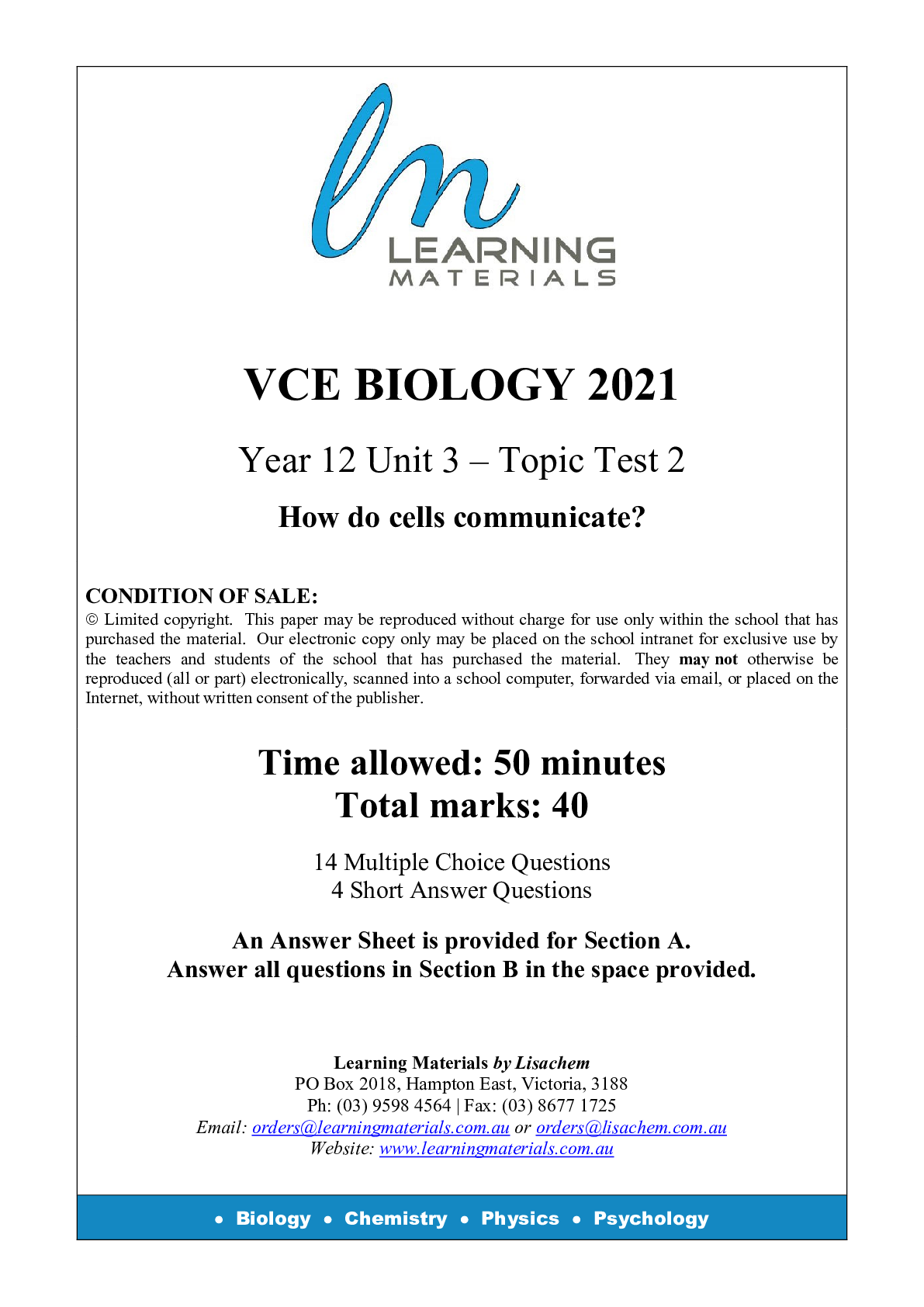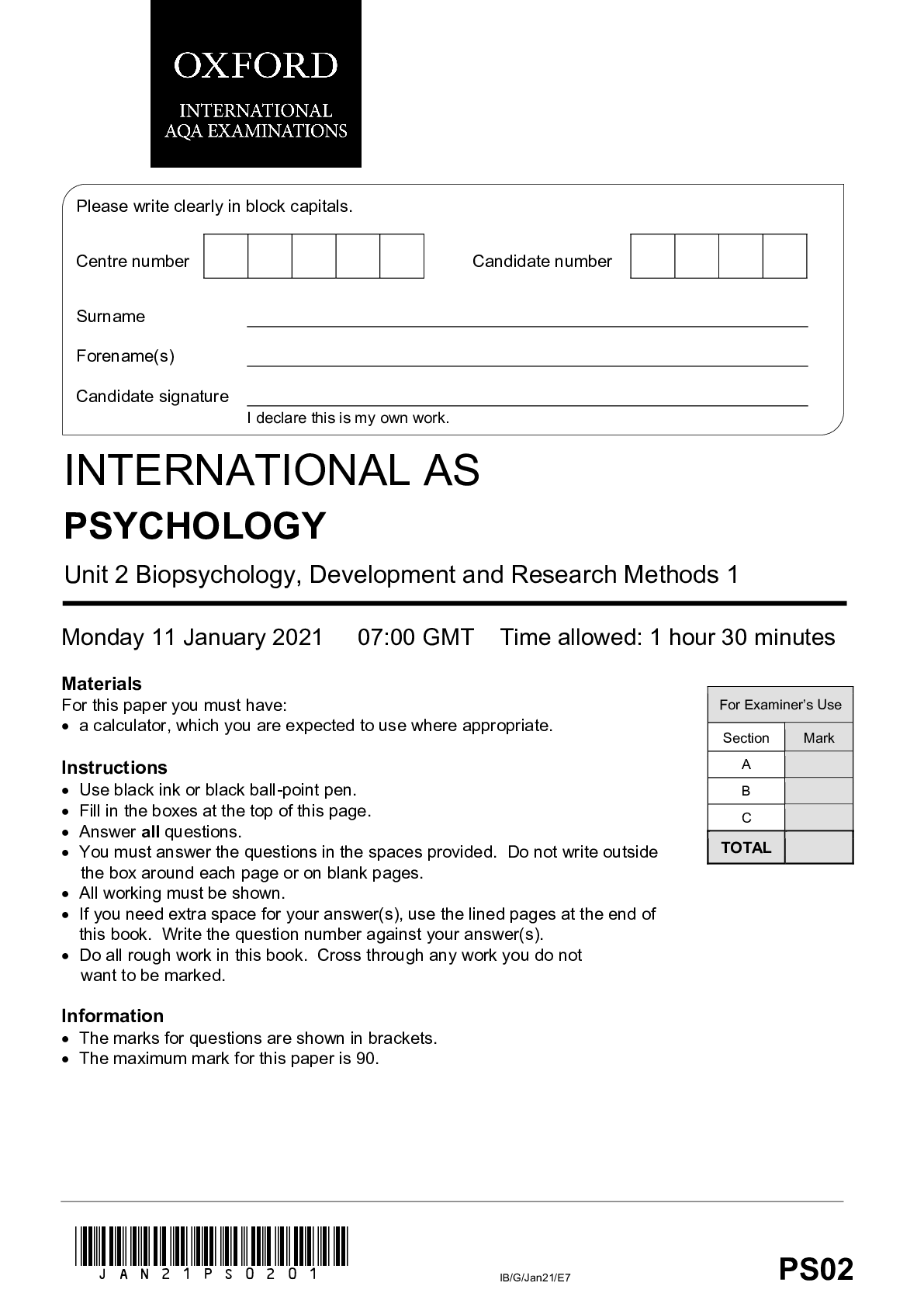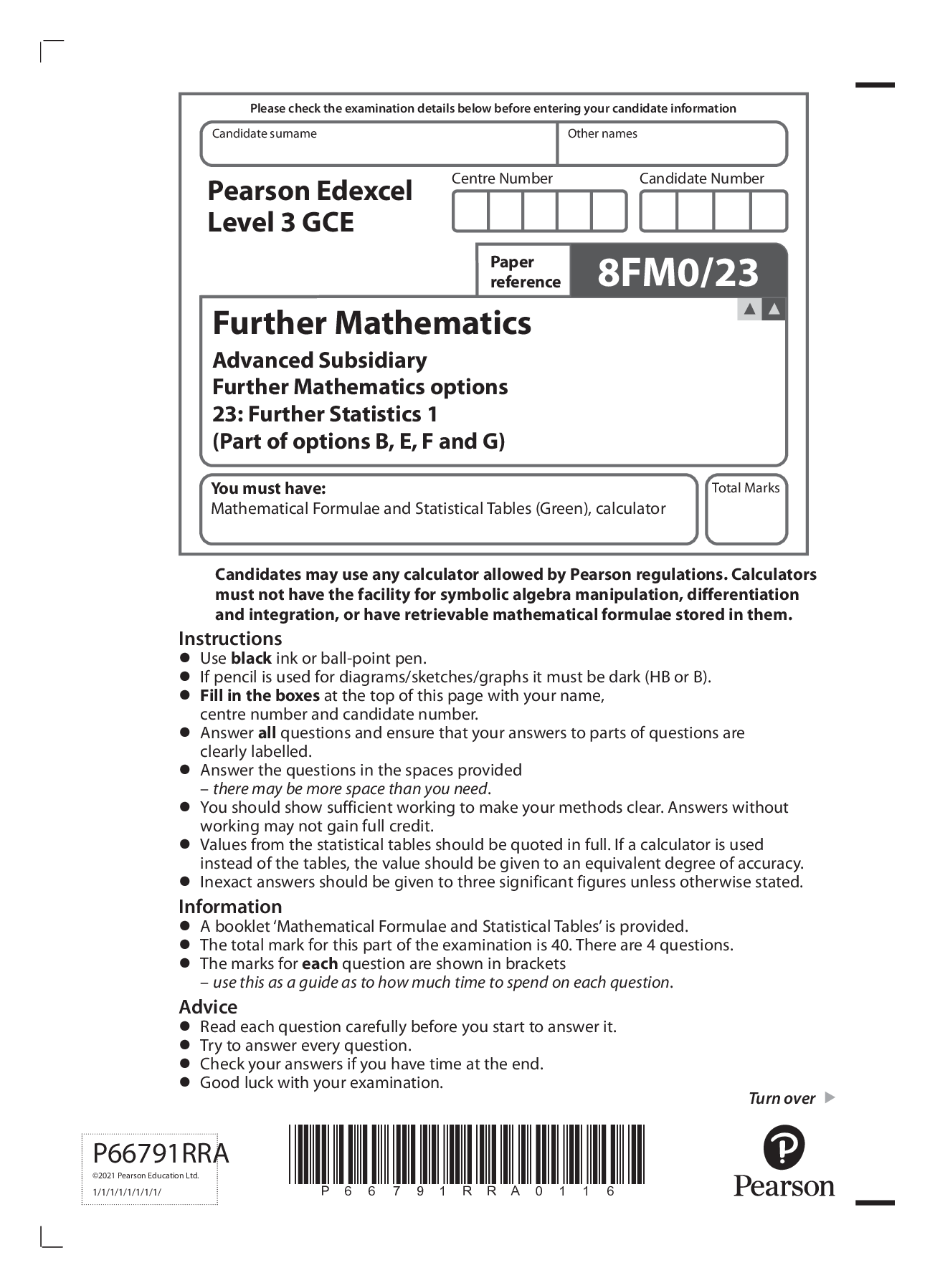Biology > QUESTION PAPER (QP) > VCE BIOLOGY 2021 Year 12 Unit 3 – Topic Test 2 How do cells communicate? (All)
VCE BIOLOGY 2021 Year 12 Unit 3 – Topic Test 2 How do cells communicate?
Document Content and Description Below
VCE BIOLOGY 2021 Year 12 Unit 3 – Topic Test 2 How do cells communicate? SECTION A – Multiple Choice Questions Question 1 Insulin and acetylcholine are both examples of A. animal hormones. B. ... plant growth regulators. C. pheromones. D. neurotransmitters. Question 2 Which of the cellular signalling processes listed uses a secondary messenger? A. Endocrine signalling via intracellular receptors B. Endocrine signalling via extracellular receptors C. Plant communication via plasmodesmata D. Animal cellular communication via gap junctions Question 3 Which type of hormones travel the furthest from their site of production? A. Autocrine hormones B. Paracrine hormones C. Endocrine hormones D. Pheromones2 Learning Materials by Lisachem VCE Biology 2021 Year 12 Unit 3 – Topic Test 2 Figure 1 relates to Questions 4 and 5. Figure 1: Stimulus – response flowchart Question 4 For the above stimulus-response flowchart the terms that most appropriately represent Q, R and S in the correct order would be A. reception, sensor and response. B. control, signal transduction and response. C. receptor, control centre and effector. D. transduction, reception and response. Question 5 If Figure 1 represented a negative feedback loop one would expect to see over time A. Q receiving a lessened signal. B. Q receiving a stronger signal. C. S reacting at a faster rate. D. an increase in signal produced at R. Question 6 Which of the following conditions is caused by an infectious agent? A. Emphysema caused by breathing in smoke particles. B. Huntington’s disease which is an autosomal dominant genetic condition. C. Scurvy caused by vitamin C deficiency. D. Cold sores caused by the Herpes simplex virus.Learning Materials by Lisachem VCE Biology 2021 Year 12 Unit 3 – Topic Test 2 3 Question 7 Figure 2: Image seen through a microscope The pathogen shown in Figure 2 above is most likely to be A. staphylococcus. B. lactobacillus. C. spirochaetes. D. prions. Question 8 An antibody produced by the body in response to a pathogen forms a characteristic Y shape. The antibody molecules possess A. two active sites complementary to different antigens. B. two active sites complementary to the same antigen. C. three active sites complementary to different antigens. D. three active sites complementary to the same antigen. Question 9 A scientific theory for many diseases is called the ‘germ theory’ of disease. This theory states that pathogens or ‘germs’ lead to disease. The ‘germ theory’ of disease was proposed after the creation of which invention? A. PCR machine B. Stethoscope C. Light microscope D. Synchrotron4 Learning Materials by Lisachem VCE Biology 2021 Year 12 Unit 3 – Topic Test 2 Question 10 The reason the body’s immune system does not attack bacteria in the gut is because A. bacteria in the gut have the body’s self-markers and are not recognised as foreign. B. These bacteria have not breached the body’s first line of defence. C. these bacteria belong to the natural flora of the body. D. these bacteria are immune to the actions of the body’s defences. [Show More]
Last updated: 2 years ago
Preview 1 out of 16 pages

Buy this document to get the full access instantly
Instant Download Access after purchase
Buy NowInstant download
We Accept:

Reviews( 0 )
$6.50
Can't find what you want? Try our AI powered Search
Document information
Connected school, study & course
About the document
Uploaded On
Apr 20, 2023
Number of pages
16
Written in
Additional information
This document has been written for:
Uploaded
Apr 20, 2023
Downloads
0
Views
142















